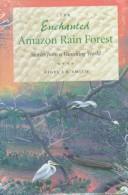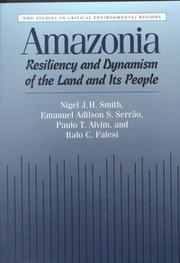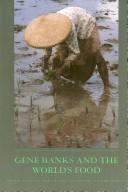| Listing 1 - 10 of 10 |
Sort by
|
Book
ISBN: 9783319055091 3319055089 9783319055084 3319055097 Year: 2015 Publisher: Cham : Springer International Publishing : Imprint: Springer,
Abstract | Keywords | Export | Availability | Bookmark
 Loading...
Loading...Choose an application
- Reference Manager
- EndNote
- RefWorks (Direct export to RefWorks)
This book explores the degree to which landscapes have been enriched with palms by human activities and the importance of palms for the lives of people in the region today and historically. Palms are a prominent feature of many landscapes in Amazonia, and they are important culturally, economically, and for a variety of ecological roles they play. Humans have been reorganizing the biological furniture in the region since the first hunters and gatherers arrived over 20,000 years ago.
Earth Sciences. --- Biogeosciences. --- Human Geography. --- Plant Sciences. --- Geography. --- Life sciences. --- Botany. --- Géographie --- Sciences de la vie --- Botanique --- Biology --- Health & Biological Sciences --- Biology - General --- Palms --- Arecaceae --- Arecales --- Palm family (Plants) --- Palm trees --- Palmaceae --- Palmae --- Palmales --- Earth sciences. --- Geobiology. --- Plant science. --- Human geography. --- Monocotyledons --- Botanical science --- Phytobiology --- Phytography --- Phytology --- Plant biology --- Plant science --- Natural history --- Plants --- Anthropo-geography --- Anthropogeography --- Geographical distribution of humans --- Social geography --- Anthropology --- Geography --- Human ecology --- Earth sciences --- Biosphere --- Floristic botany
Book
ISBN: 1783710101 9781783710102 9780745333618 0745333613 0745333605 9780745333601 Year: 2014 Publisher: London
Abstract | Keywords | Export | Availability | Bookmark
 Loading...
Loading...Choose an application
- Reference Manager
- EndNote
- RefWorks (Direct export to RefWorks)
The most comprehensive attempt to anthologise the key Ranter writings - bringing together some remarkable, visionary and unforgettable texts.
Radicalism --- Ranters. --- Christianity and politics --- Christianity --- Church and politics --- Politics and Christianity --- Politics and the church --- Political science --- Antinomianism --- Extremism, Political --- Ideological extremism --- Political extremism --- History --- Political aspects --- Great Britain

ISBN: 9781853396458 Year: 2020 Publisher: Rugby Practical Action publishing
Abstract | Keywords | Export | Availability | Bookmark
 Loading...
Loading...Choose an application
- Reference Manager
- EndNote
- RefWorks (Direct export to RefWorks)
Electric motors, Induction --- Hydroelectric generators --- Small power production facilities --- Water-power
Book
ISBN: 9004323422 9004323414 9789004323421 9789004323414 Year: 2016 Volume: 5 Publisher: Leiden Brill
Abstract | Keywords | Export | Availability | Bookmark
 Loading...
Loading...Choose an application
- Reference Manager
- EndNote
- RefWorks (Direct export to RefWorks)
Politics and Aesthetics in European Baroque and Classicist Tragedy is a volume of essays investigating European tragedy in the seventeenth century, comparing Shakespeare, Vondel, Gryphius, Racine and several other vernacular tragedians, together with consideration of neo-Latin dramas by Jesuits and other playwrights. To what extent were similar themes, plots, structures and styles elaborated? How is difference as well as similarity to be accounted for? European drama is beginning to be considered outside of the singular vernacular frameworks in which it has been largely confined (as instanced in the conferences and volumes of essays held in the Universities of Munich and Berlin 2010-12), but up-to-date secondary material is sparse and difficult to obtain. This volume intends to help remedy that deficit by addressing the drama in a full political, religious, legal and social context, and by considering the plays as interventions in those contexts. Contributors are: Christian Biet, Jan Bloemendal, Helmer J. Helmers, Blair Hoxby, Sarah M. Knight, Tatiana Korneeva, Frans-Willem Korsten, Joel B. Lande, Russell J. Leo, Howard B. Norland, Kirill Ospovat, James A. Parente, Jr., Freya Sierhuis, Nienke Tjoelker and Emily Vasiliauskas.
European drama --- European drama (Tragedy) --- Latin drama (Tragedy) --- Politics in literature --- Aesthetics in literature --- History and criticism --- Classical influences --- Political science in literature --- Drama, Modern --- Comparative literature --- Thematology --- Drama --- anno 1600-1699 --- Europe --- European literature --- Politics in literature. --- Aesthetics in literature. --- History and criticism. --- Classical influences. --- European drama - 17th century - History and criticism --- European drama (Tragedy) - Classical influences --- Latin drama (Tragedy) - History and criticism --- History

ISBN: 0813018714 9780813018713 0813013771 9780813013770 Year: 1996 Publisher: Gainesville University Press of Florida
Abstract | Keywords | Export | Availability | Bookmark
 Loading...
Loading...Choose an application
- Reference Manager
- EndNote
- RefWorks (Direct export to RefWorks)
"Insightful work, written for a popular audience, offers reader a general understanding of the region"--Handbook of Latin American Studies, v. 57.
Folklore --- Indians of South America --- Nature --- Human ecology --- Anthropology --- Social Sciences --- Ecology --- Environment, Human --- Human beings --- Human environment --- Ecological engineering --- Human geography --- Folk beliefs --- Folk-lore --- Traditions --- Ethnology --- Manners and customs --- Material culture --- Mythology --- Oral tradition --- Storytelling --- American aborigines --- American Indians --- Indigenous peoples --- Folklore. --- Effect of human beings on --- Social aspects --- Effect of environment on
Book
ISBN: 1526120798 1526106205 9781526106216 1526106213 9781526106209 9781526106193 9781526120793 Year: 2016 Publisher: Manchester
Abstract | Keywords | Export | Availability | Bookmark
 Loading...
Loading...Choose an application
- Reference Manager
- EndNote
- RefWorks (Direct export to RefWorks)
This collection of essays studies the expression and diffusion of radical ideas in Britain from the period of the English Revolution in the mid-seventeenth century to the Romantic Revolution in the early nineteenth century. The essays included in the volume explore the modes of articulation and dissemination of radical ideas in the period by focusing on actors ('radical voices') and a variety of written texts and cultural practices ('radical ways'), ranging from fiction, correspondence, pamphlets and newspapers to petitions presented to Parliament and toasts raised in public. They analyse the way these media interacted with their political, religious, social and literary context. This volume provides an interdisciplinary outlook on the study of early modern radicalism, with contributions from literary scholars and historians, and uses case studies as insights into the global picture of radical ideas. It will be of interest to students of seventeenth- and eighteenth-century literature and history.
Radikalismus --- Radicalism in literature. --- Radicalism and the press. --- Radicalism. --- Radicalism and the press --- Radicalism --- Press and radicalism --- Press --- Extremism, Political --- Ideological extremism --- Political extremism --- Political science --- History --- Grossbritannien --- Great Britain. --- Storbritannien --- Anglia --- Wielka Brytania --- Nagy-Britannia --- United Kingdom --- United Kingdom of Great Britain and Ireland --- United Kingdom of Great Britain and Northern Ireland --- Grande-Bretagne --- Angliyah --- Briṭanyah --- Velikobritanii︠a︡ --- Saharātchaʻānāčhak --- Marea Britanie --- Prydain Fawr --- Royaume-Uni --- Iso-Britannia --- Yhdistynyt kuningaskunta --- Förenade kungariket --- Grã-Bretanha --- בריטניה --- イギリス --- Igirisu --- Northern Ireland --- Scotland --- Wales --- England and Wales --- 1600-1799 --- Extremismus --- Politischer Extremismus --- Radikaler --- Radikalisierung --- Velikobritanii͡ --- Vereinigtes Königreich von Großbritannien und Nordirland --- Großbritannien und Nordirland --- England --- UK --- Angleterre --- Brīṭāniyā al-ʿUẓmā --- Brīṭāniya 'l-ʿUẓmā --- Vereinigtes Königreich Großbritannien und Nordirland --- Great Britain --- Grande Bretagne --- British Isles --- Gran Bretagna --- U.K. --- GB --- British Empire --- Britisches Reich --- Briten --- Schottland --- Commonwealth --- 1707 --- -Radikalismus --- cultural transfers. --- eighteenth century. --- print culture. --- radicalism. --- seventeenth century. --- -cultural transfers.
Book
ISBN: 3031128036 3031128028 Year: 2023 Publisher: Cham : Springer International Publishing : Imprint: Springer,
Abstract | Keywords | Export | Availability | Bookmark
 Loading...
Loading...Choose an application
- Reference Manager
- EndNote
- RefWorks (Direct export to RefWorks)
This is the first comprehensive listing of Amazon fruits from an ethnobotanical perspective. This detailed book covers 50 botanical families, 207 species, in the Amazon including how the people of each region use them. It is lavishly illustrated with high-quality photographs taken by the author, an extensive list of references, and Dr. Smith’s latest, meticulous research. This book should be a foundational work for scholars working in the plant sciences, researchers in ethnobotanical studies, and general interest scholars seeking more detailed information on the latest research by a leading scientist in the Amazon.
Plants --- Plant physiology. --- Plant ecology. --- Plant diseases. --- Plant biotechnology. --- Plant Evolution. --- Plant Development. --- Plant Physiology. --- Plant Ecology. --- Plant Pathology. --- Plant Biotechnology. --- Evolution. --- Development. --- Fruit

ISBN: 0585287848 9280809067 9780585287843 9789280809060 Year: 1998 Publisher: Tokyo : United Nations University Press,
Abstract | Keywords | Export | Availability | Bookmark
 Loading...
Loading...Choose an application
- Reference Manager
- EndNote
- RefWorks (Direct export to RefWorks)
"Balanced, worthwhile book includes chapters on threats to the environment, change and societal response, conservation and management, plantation crops, agroforestry, ranching, floodplain dynamics, and trends and opportunities"--Handbook of Latin American Studies, v. 57.
Democracy -- History -- 20th century. --- Equality. --- Environmental protection --- Natural resources --- Land use --- Agriculture --- Earth & Environmental Sciences --- Ecology --- Farming --- Husbandry --- Land --- Land utilization --- Use of land --- Utilization of land --- National resources --- Resources, Natural --- Environmental quality management --- Protection of environment --- Economic aspects --- Environnement --- Utilisation du sol --- Ressources naturelles --- Protection --- Industrial arts --- Life sciences --- Food supply --- Land use, Rural --- Economics --- Land cover --- Landscape assessment --- NIMBY syndrome --- Resource-based communities --- Resource curse --- Environmental sciences --- Applied ecology --- Environmental engineering --- Environmental policy --- Environmental quality

ISBN: 0691084386 1322006415 0691610061 0691638225 0691024278 1400858119 9781400858118 9780691084381 9780691610061 Year: 2014 Publisher: Princeton, NJ
Abstract | Keywords | Export | Availability | Bookmark
 Loading...
Loading...Choose an application
- Reference Manager
- EndNote
- RefWorks (Direct export to RefWorks)
Gene Banks and the World's Food contributes to the crucial debate on how best to preserve some of society's most valuable raw material. The authors also provide an up-to-date report on the status and locations of gene banks, which includes the latest available information on germplasm holdings by crop. They (hen discuss how these holdings are being used to develop better crop varieties for the benefit of people around the world.Originally published in 1986.The Princeton Legacy Library uses the latest print-on-demand technology to again make available previously out-of-print books from the distinguished backlist of Princeton University Press. These editions preserve the original texts of these important books while presenting them in durable paperback and hardcover editions. The goal of the Princeton Legacy Library is to vastly increase access to the rich scholarly heritage found in the thousands of books published by Princeton University Press since its founding in 1905.
Pool de gènes --- Gene pools --- Ressource génétique --- genetic resources --- Amélioration des plantes --- Plant breeding --- Production végétale --- Plant production --- Sécurité alimentaire --- food security --- Biotechnologie --- Biotechnology --- Introduction de plantes --- Plant introduction --- Ressource alimentaire --- Food resources --- world --- Food crops --- -Gene banks, Plant --- 631.523.11:57.082.542 --- 338.439(100) --- 633.18 --- 575.1 --- 581.15/.16 --- $?$10/87 --- Plant gene banks --- Germplasm resources, Plant --- Seeds --- Food --- Plants, Edible --- Field crops --- Horticultural crops --- Germplasm resources --- Gene banks, Plant. --- Plant and Crop Sciences. Plant Breeding and Genetics --- Germplasm resources. --- Plant Genetic Resources, Gene Banks --- ETH Ethnobotany & Economic botany --- ethnobotany & economic botany --- food plants --- gene banks --- genetics --- human nutrition --- Plant Genetic Resources, Gene Banks. --- Gene banks, Plant --- World food
Book
ISBN: 1501717944 9781501717949 0801427711 9780801427718 0801480582 9780801480584 Year: 2018 Publisher: Ithaca, NY
Abstract | Keywords | Export | Availability | Bookmark
 Loading...
Loading...Choose an application
- Reference Manager
- EndNote
- RefWorks (Direct export to RefWorks)
The tropics are the source of many of our familiar fruits, vegetables, oils, and spice, as well as such commodities as rubber and wood. Moreover, other tropical fruits and vegetables are being introduced into our markets to offer variety to our diet. Now, as tropical forests are increasingly threatened, we face a double-fold crisis: not only the loss of the plants but also rich pools of potentially useful genes. Wild populations of crop plants harbor genes that can improve the productivity and disease resistance of cultivated crops, many of which are vital to developing economies and to global commerce. Eight chapters of this book are devoted to a variety of tropical crops-beverages, fruit, starch, oil, resins, fuelwood, fodder, spices, timber, and nuts-the history of their domestication, their uses today, and the known extent of their gene pools, both domesticated and wild. Drawing on broad research, the authors also consider conservation strategies such as parks and reserves, corporate holdings, gene banks and tissue culture collections, and debt-for-nature swaps. They stress the need for a sensitive balance between conservation and the economic well-being of local populations. If economic growth is part of the conservation effort, local populations and governments will be more strongly motivated to save their natural resources. Distinctly practical and soundly informative, this book provides insight into the overwhelming abundance of tropical forests, an unsettling sense of what we may lose if they are destroyed, and a deep appreciation for the delicate relationships between tropical forest plants and people around the world.
Forest germplasm resources conservation --- Forest products --- Tree crops --- Tropical crops. --- Conservation of forest genetic resources --- Forest genetic resources conservation --- Forest conservation --- Germplasm resources conservation --- Forest production --- Botany, Economic --- Commercial products --- Raw materials --- Forest farming --- Agriculture --- Crops --- Fruit trees --- Nut trees --- Plants --- Trees --- Agroforestry --- Field crops --- Forests and forestry --- Horticultural crops --- Plantation crops --- Tropical agriculture --- Tropical plants --- Tropical crops
| Listing 1 - 10 of 10 |
Sort by
|

 Search
Search Feedback
Feedback About UniCat
About UniCat  Help
Help News
News